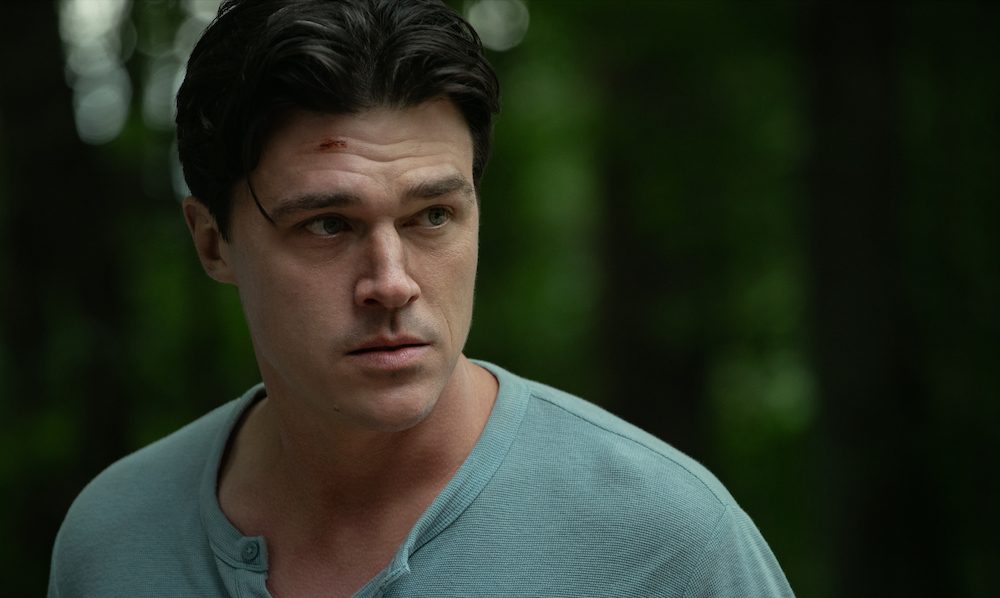Netflix’s horror thriller film, ‘Don’t Move,’ follows the story of a woman, Iris, who is drugged by a serial killer. With the clock ticking on the drug that has paralyzed her, Iris has to find a way to escape her predator, Richard, before he kills her. Directed by Adam Schindler and Brian Netto, the 2024 film presents a terrifying premise, putting the protagonist in a situation that seems impossible to get out of. The fast-paced narrative keeps the audience on the edge of their seats for the entirety of the film, and like any good horror film, it makes one wonder what they would do if they were in the shoes of the protagonist.
Don’t Move’s Compelling Premise and Terrifying Serial Killer are Entirely Fictional

Despite its scary premise that evokes the panic-inducing imagination of the audience, ‘Don’t Move’ remains a fictional story. The idea for it germinated in the minds of Adam Schindler and Brian Netto several years ago when the duo came up with a situation where a character remains paralyzed for the majority of the film. It seemed an interesting situation, which painted their character in a corner that seemed impossible to get out of. It was the challenge of the situation that really spoke to the director duo, and they approached writers T.J. Cimfel and David White (with whom they’ve worked before on 2015’s ‘Intruders’) to come up with a script about it. While Cimfel and White wrote the script, Schindler and Netto were a part of the process, as the four of them would often meet to talk about the form the story would take and where it would eventually lead.
The directors credited movies like ‘Don’t Breathe,’ ‘Waiting Until Dark,’ ‘Blink,’ and ‘A Quiet Place’ as inspirations while working on the idea. All of these films focus on one major restriction of the senses that plays an important role in the plot. Schindler and Netto wanted something similar for their film, where the character has to get creative about getting out of their situation. The director duo also looked towards the works of the greats like Alfred Hitchcock, Brian De Palma, and M. Night Shyamalan to bring a distinct texture to their story. At the end of the day, they knew that the entire narrative rested on the characters.

The quartet took their time to figure out the protagonist as well as the antagonist of the story. While the film may not get into it, they deeply explored the backstories of the characters who would eventually become Iris and Richard. Once they were clear on who these people were, the story took a better shape. When Finn Wittrock was brought on board to play Richard, he was instantly captivated by the script. While he didn’t look towards any specific serial killer as an inspiration for his role, he did look at Richard as a skilled actor who has a chameleonic property about him.
Because the film has such a crisp narrative that moves swiftly between beats, Wittrock decided to bring that rhythm into his acting as well. Instead of looking at the bigger picture of the film, he decided to take it one situation at a time, which is how Richard would approach it, too, as he has no idea what lies ahead of him. With Richard handling the challenges as they come and being forced to think on his feet, Wittrock could tap into a more humanely relatable facet of his otherwise despicable character, making him realistic and, hence, scarier for the audience.
Adam Schindler and Brian Netto Rooted the Film in Realism

While the premise and the characters of ‘Don’t Move’ are completely fictional, the directors wanted the film to feel as close to reality as possible. One of the ways to do that was to keep things in real-time and follow the perspective of Iris as she slowly loses the agency of her senses. While working on the script, they would often find ways to make things even more difficult for Iris and would then focus on figuring out how she could get out of them realistically. They also wanted to challenge the norm of horror by setting the story in broad daylight rather than in the dark of night. Another thing that the directors were adamant about was not to use voiceovers to explain Iris’ side of the story. This would have created a dissociation between her and the audience, while the directors wanted the audience to be connected to Iris and experience the horror of her situation with her.
Due to this, actress Kelsey Asbille was restrained from relying on the physicality of the role rather than the dialogue to express her emotions. To prepare for this challenge, she spoke with an anesthesiologist to understand how paralytics work on a person and what it really means to slowly lose control of your body. The script itself became an important marker for her as each scene detailed the process of her losing control of her limbs. The directors kept a close watch on even the tiniest of her movements to make sure that she didn’t move her leg or even twitch her eyebrow in certain scenes. Being perfectly still for a good part of the film is quite a challenge, but Asbille rose up to the occasion and proved her mettle as a performer, giving the audience a person to root for, even if a fictional one.
Read More: Best Slasher Horror Movies on Netflix


You must be logged in to post a comment.